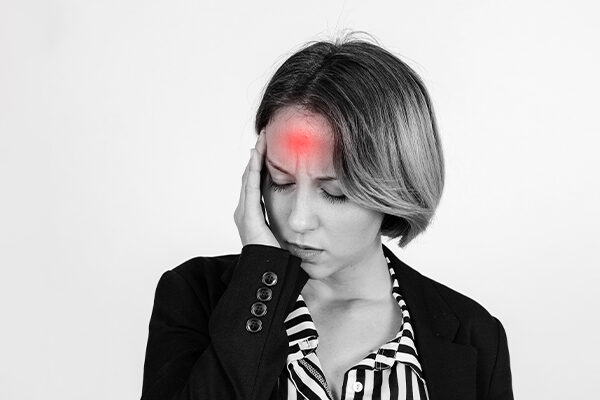Last Updated on November 13, 2023
What is Paroxysmal Nocturnal Dyspnea?
Paroxysmal Nocturnal Dyspnea (PND) is a medical disorder characterized by sudden and extreme nighttime shortness of breath, gasping for air, coughing, and a desire to sit up, stand up, and/or open a window for fresh air—all of which are techniques used to help improve breathing. This phenomenon can be alarming and disturbing, as people frequently wake up in a condition of respiratory distress.
It can be a potential symptom of a variety of major respiratory and circulatory conditions, including COPD (chronic obstructive pulmonary disease), heart failure, and pneumonia.
In this article, we explore all the different aspects of PND, such as its definition, causes, symptoms, diagnosis, potential treatment alternatives, and the importance of clinical research.
Also read: Benefits of Clinical Research
Understanding Paroxysmal Nocturnal Dyspnea
Paroxysmal nocturnal dyspnea, or “PND,” is a clinical term used to describe sudden shortness of breath during sleep. A feeling of suffocation often accompanies these episodes and can cause people to wake up gasping for air. PND is regarded as a symptom rather than a disease, and it might be indicative of a variety of underlying health problems.
Causes
There is no understanding of the phrase “paroxysmal nocturnal dyspnea.” It is only referred to as a symptom of heart failure. In other cases, it describes nighttime shortness of breath caused by other medical disorders, some of which are benign. The following are some of the most common causes of nighttime shortness of breath.
Heart Failure:
Congestive Heart Failure (CHF) is one of the leading causes of PND. Heart failure occurs when the heart is unable to adequately pump blood, resulting in fluid buildup in the lungs (pulmonary edema). This fluid buildup can make breathing difficult, especially when lying down.
Hypertension (High Blood Pressure):
Uncontrolled high blood pressure can put a strain on the heart and lead to heart failure, both of which contribute to PND.
Coronary Artery Disease:
Coronary artery disease reduces blood supply to the heart muscle, which weakens the heart and contributes to heart failure and PND.
Valvular Heart Disease:
Heart valve malfunction can impair blood flow and contribute to heart failure.
Sleep Apnea:
Conditions such as obstructive sleep apnea can induce nocturnal dyspnea by causing intermittent pauses in breathing during sleep.
Symptoms of Paroxysmal Nocturnal Dyspnea
Paroxysmal nocturnal dyspnea usually occurs within a few hours of falling asleep. It awakens the person in their mid-sleep. To open their airways, they may gasp for air, cough, or sit or stand up. Breathing may return to normal after a while. It may take up to half an hour, or perhaps longer, to recover.
Many people have difficulty falling asleep following an episode of PND. PND can be upsetting, and one or more episodes might cause sleep anxiety or sleeplessness. Some common symptoms include:
- Sudden Shortness of Breath: The identifying symptom of PND is the sudden onset of trouble breathing, which frequently wakes people up from sleep.
- Orthopnea: People with PND may find relief from shortness of breath by sitting or standing upright, a condition known as orthopnea.
- Coughing and Wheezing: As the body strives to drain excess fluid from the lungs, PND episodes may be accompanied by coughing and wheezing.
- Chest Pain: During PND episodes, some people may experience chest pain or discomfort.
Diagnosis
Diagnostic tests include one of the following:
- Medical History and Physical Exam: A thorough medical history and physical exam are essential for diagnosing symptoms, identifying risk factors, and determining potential causes.
- Imaging Research: Chest X-rays and echocardiograms can detect heart and lung problems.
- Blood Tests: Blood tests may be performed to examine cardiac biomarkers and identify inflammatory indicators.
- Electrocardiogram (ECG or EKG): ECG recordings can detect irregularities in the electrical activity of the heart.
- Sleep Studies: Polysomnography may be used to diagnose sleep-related respiratory disorders such as sleep apnea.
Treatment Options
The treatment of paroxysmal nocturnal dyspnea (PND) centers around addressing the underlying causes while minimizing symptoms in order to improve the overall quality of life. Treatment options are numerous, ranging from lifestyle changes to medical processes. Here’s a comprehensive approach of the various treatment options available.
Management of Underlying Condition
Heart Failure:
When heart failure leads to PND, the primary goal is to optimize heart function. Diuretics and other medications help minimize fluid retention, easing the workload on the heart. To improve cardiac function, ACE inhibitors and beta-blockers may also be prescribed.
Hypertension (High Blood Pressure):
Controlling high blood pressure is essential. Lifestyle modifications such as a low-sodium diet and regular exercise may be advised. ACE inhibitors, beta-blockers, and calcium channel blockers are common antihypertensive medicines.
Coronary Artery Disease:
To enhance blood supply to the heart muscle, revascularization operations such as angioplasty or coronary artery bypass grafting (CABG) may be considered. Medications to lower cholesterol and prevent blood clots may also be advised.
Valvular Heart Disease:
To rectify valvular irregularities and restore proper blood flow, surgical intervention, such as valve repair or replacement may be performed.
Sleep Apnea:
For mild cases of obstructive sleep apnea, lifestyle modifications such as weight loss and positional therapy may be recommended. Continuous Positive Airway Pressure therapy (CPAP), which prevents airway collapse during sleep, is a conventional treatment for moderate to severe sleep apnea.
Medications for Paroxysmal Nocturnal Dyspnea
- Diuretics: Diuretics, such as furosemide, assist the body in eliminating extra fluid, lowering the risk of pulmonary edema and relieving PND symptoms.
- ACE Inhibitors and Beta-Blockers: These drugs are essential in the treatment of heart failure. ACE drugs increase blood flow while beta blockers lower heart strain, both of which contribute to symptom alleviation.
- Vasodilators: Blood vessel dilation medications, such as nitroglycerin, may be prescribed to lessen the burden on the heart and enhance overall cardiac function.
Lifestyle Modifications
- Changes in Diet: It is essential to follow a heart-healthy, low-sodium diet. This involves limiting the intake of processed and salty foods to reduce fluid retention.
- Exercise: Regular physical activity helps to maintain cardiovascular health. Individuals with PND, on the other hand, should consult a medical professional before beginning any exercise regimen.
- Weight Management: Maintaining a healthy weight relieves strain on the heart and can enhance overall cardiac function.
- Avoidance of Triggers: It is crucial to identify and avoid potential triggers such as excessive alcohol use and smoking.
CPAP (Continuous Positive Airway Pressure)
CPAP therapy is a highly successful solution for those with PND caused by obstructive sleep apnea. These machines provide a continual stream of air, preventing airway collapse and promoting continuous breathing.
Surgical Procedures
Valve Repair or Replacement:
Surgical procedures to repair or replace the damaged valve may be advised in situations with valvular heart disease causing PND.
Coronary Artery Bypass Grafting (CABG):
In cases of severe coronary artery disease, surgical revascularization with CABG may be considered to enhance blood flow to the heart.
Implantable Devices:
Implantable cardioverter-defibrillators (ICDs) or cardiac resynchronization therapy (CRT) devices may be installed in some situations of heart failure to regulate heart rhythm and enhance overall cardiac function.
Word From Revive
A better understanding of the mechanisms that contribute to PND can pave the way for more targeted and effective treatments, enhancing the quality of life for people who suffer from this nocturnal breathlessness. Clinical research in this field adds to our understanding of cardiovascular health, sleep problems, and their interconnection, promoting a more holistic approach to patient management. As we explore the complexities of PND through extensive research, we get closer to discovering creative solutions that may relieve suffering and improve the well-being of those affected by this challenging condition.
Conclusion
Paroxysmal nocturnal dyspnea is a symptom that demands careful attention and prompt medical evaluation. Understanding its underlying causes, recognizing its symptoms, and seeking appropriate diagnosis and treatment are crucial steps in managing this condition. As various clinical research organizations are working to shed light on the complexities of PND, healthcare providers and patients alike can work together to improve outcomes and enhance the quality of life for those affected by this challenging respiratory phenomenon.




